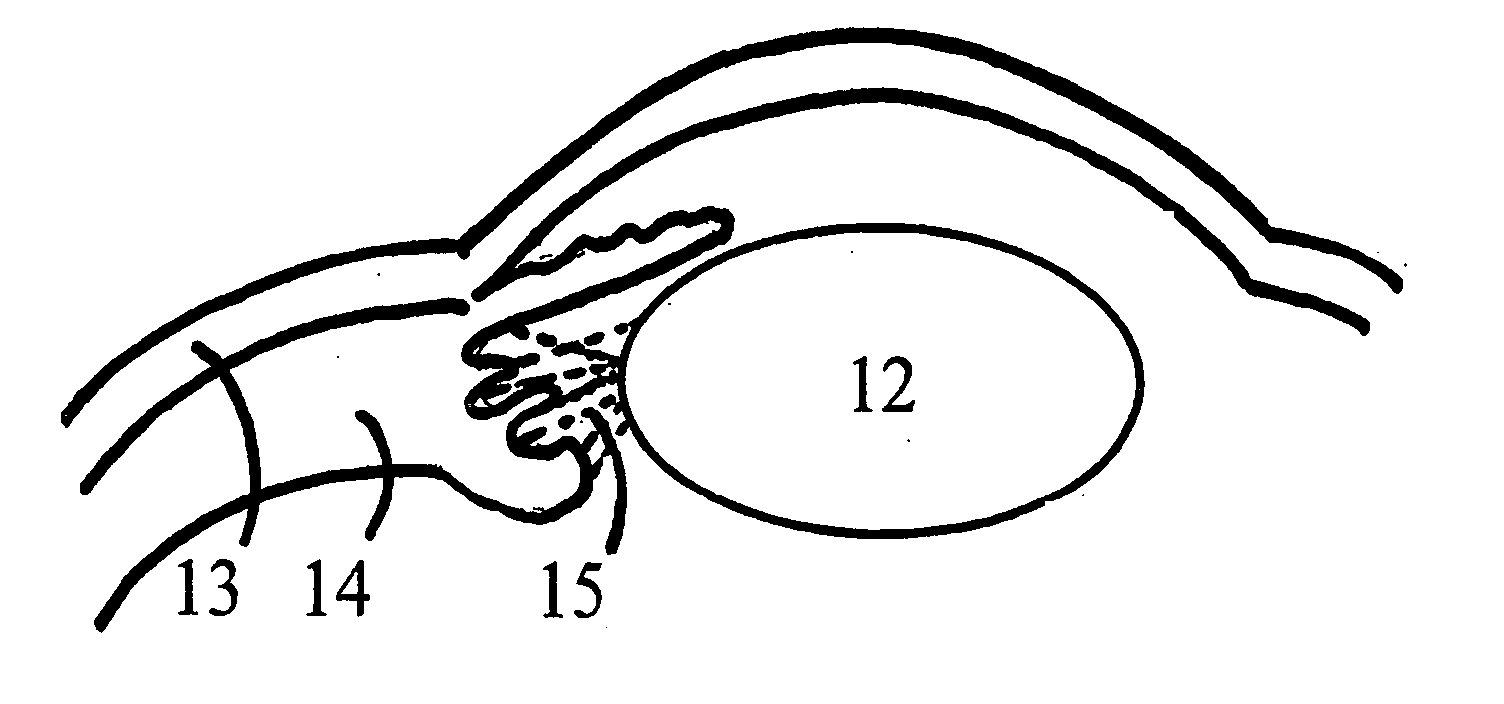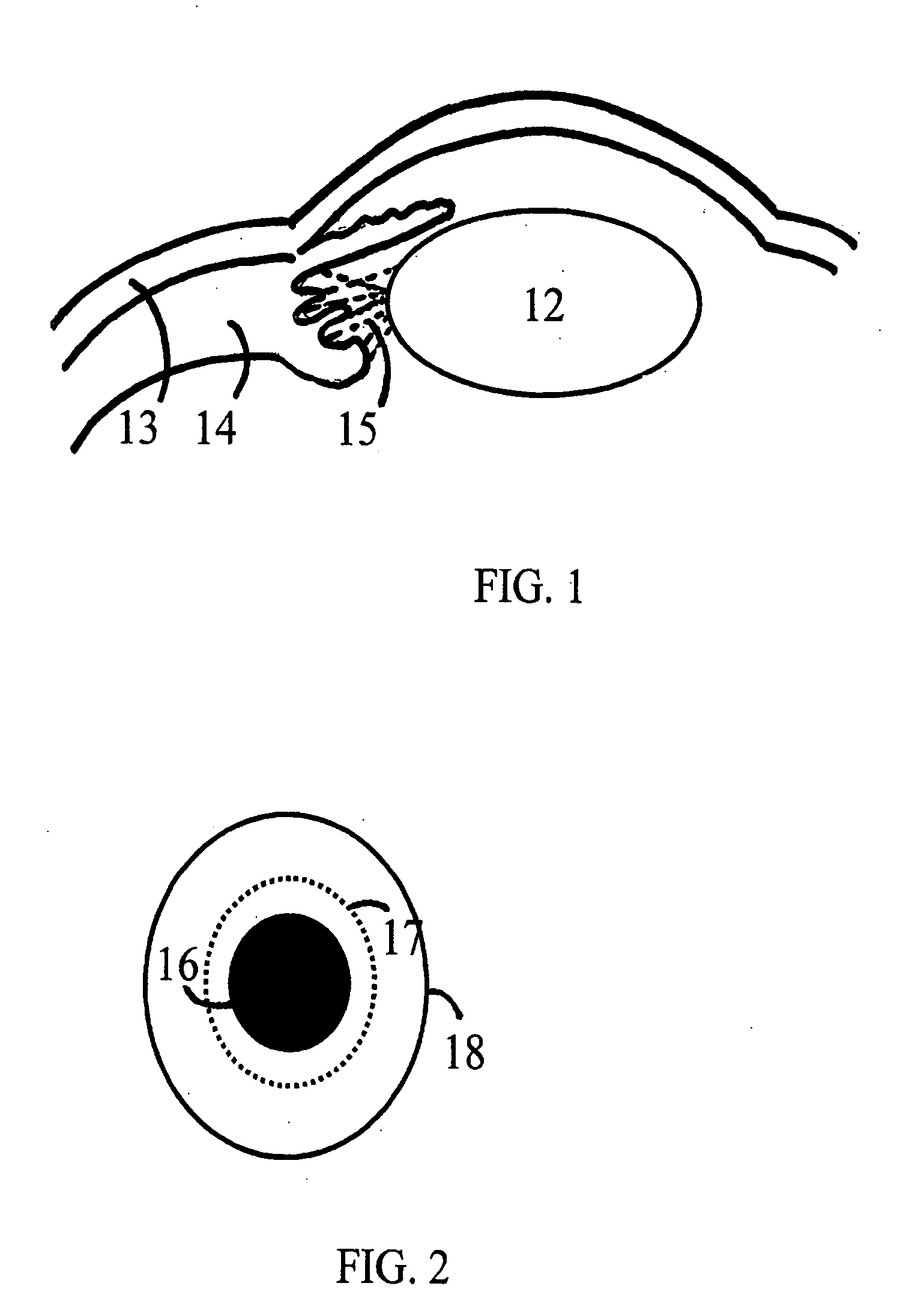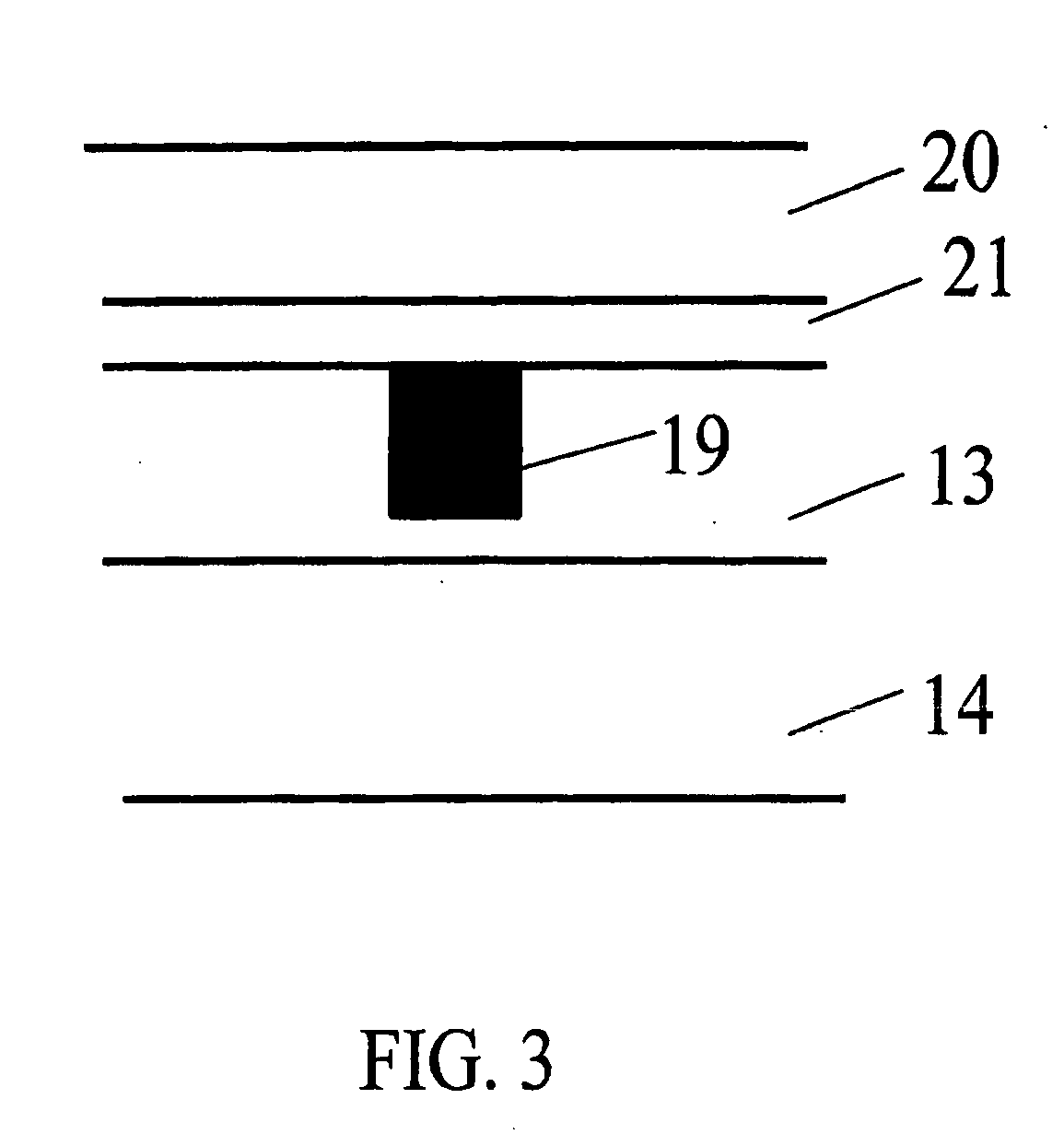Methods and apparatus for presbyopia correction using ultraviolet and infrared lasers
a technology of infrared lasers and apparatus, applied in the field of apparatus and methods for the treatment of presbyopia using ultraviolet and infrared lasers, can solve the problems of inability to provide the solution of presbyopia patients with lasers using corneal reshaping, inability to achieve the effect of reducing the damage to the corneal tissue, and reducing the cost of the treatmen
- Summary
- Abstract
- Description
- Claims
- Application Information
AI Technical Summary
Benefits of technology
Problems solved by technology
Method used
Image
Examples
Embodiment Construction
[0028]FIG. 1 shows the lens of a human eye 12 connected to the sclera tissue 13 and the ciliary body 14 by zonule fibers 15. The lens power is given by contraction and expansion of the ciliary mussel 14 and the movement of the zonular fiber 15 connected to the lens 12.
[0029]FIG. 2 shows the laser ablated sclera area outside the limbus 16 defined by the area between two circles, 17 and 18, having diameter of about 10 mm and 18 mm. Various ablation patterns within these two circle area are proposed in the present invention.
[0030] Based on the proposed theory of the present invention and as shown in FIG. 3, when a portion of the sclera tissue 13 is removed by an ablative laser, this ablated “gap”19 will be filled in by the sub-conjunctiva tissue 21 which is much more flexible than the original sclera tissue 13. This filled in sub-conjunctiva 21 will allow the ciliary body 14 to contract or relax the zonular fiber 15 which is connected to the lens, when the presbyopic patient is adjus...
PUM
 Login to View More
Login to View More Abstract
Description
Claims
Application Information
 Login to View More
Login to View More - R&D
- Intellectual Property
- Life Sciences
- Materials
- Tech Scout
- Unparalleled Data Quality
- Higher Quality Content
- 60% Fewer Hallucinations
Browse by: Latest US Patents, China's latest patents, Technical Efficacy Thesaurus, Application Domain, Technology Topic, Popular Technical Reports.
© 2025 PatSnap. All rights reserved.Legal|Privacy policy|Modern Slavery Act Transparency Statement|Sitemap|About US| Contact US: help@patsnap.com



